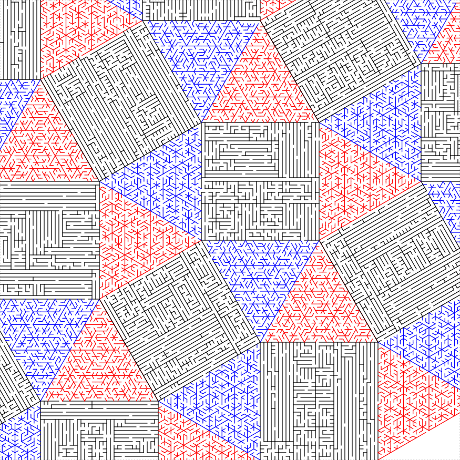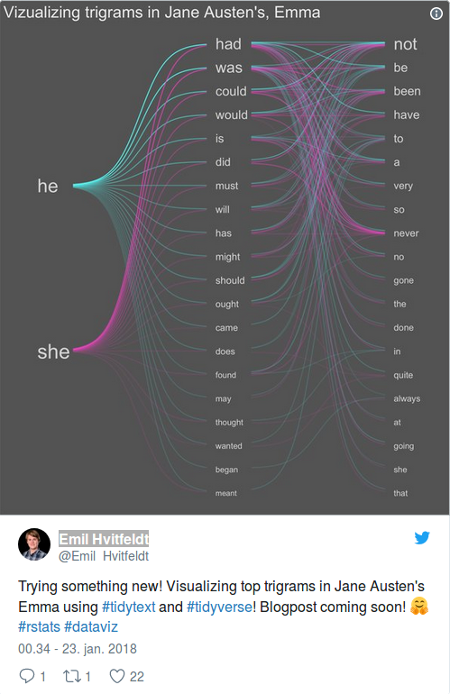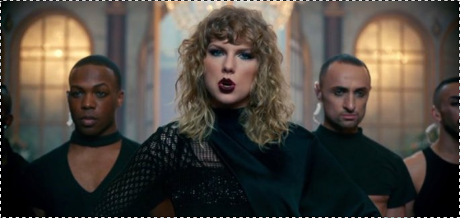Spatial Microsimulation with R by Robin Lovelace and Morgane Dumont.
Apologies for the long quote below but spatial microsimulation is unfamiliar enough that it merited an introduction in the authors’ own prose.
We have all attended public meetings where developers, polluters, landfill operators, etc., had charts, studies, etc., and the public was armed with, well, its opinions.
Spatial Microsimulation with R can put you in a position to offer alternative analysis, meaningfully ask for data used in other studies, in short, arm yourself with weapons long abused in public policy discussions.
From Chapter 1, 1.2 Motivations:
…
Imagine a world in which data on companies, households and governments were widely available. Imagine, further, that researchers and decision-makers acting in the public interest had tools enabling them to test and model such data to explore different scenarios of the future. People would be able to make more informed decisions, based on the best available evidence. In this technocratic dreamland pressing problems such as climate change, inequality and poor human health could be solved.
These are the types of real-world issues that we hope the methods in this book will help to address. Spatial microsimulation can provide new insights into complex problems and, ultimately, lead to better decision-making. By shedding new light on existing information, the methods can help shift decision-making processes away from ideological bias and towards evidence-based policy.
The ‘open data’ movement has made many datasets more widely available. However, the dream sketched in the opening paragraph is still far from reality. Researchers typically must work with data that is incomplete or inaccessible. Available datasets often lack the spatial or temporal resolution required to understand complex processes. Publicly available datasets frequently miss key attributes, such as income. Even when high quality data is made available, it can be very difficult for others to check or reproduce results based on them. Strict conditions inhibiting data access and use are aimed at protecting citizen privacy but can also serve to block democratic and enlightened decision making.
The empowering potential of new information is encapsulated in the saying that ‘knowledge is power’. This helps explain why methods such as spatial microsimulation, that help represent the full complexity of reality, are in high demand.
Spatial microsimulation is a growing approach to studying complex issues in the social sciences. It has been used extensively in fields as diverse as transport, health and education (see Chapter ), and many more applications are possible. Fundamental to the approach are approximations of individual level data at high spatial resolution: people allocated to places. This spatial microdata, in one form or another, provides the basis for all spatial microsimulation research.
The purpose of this book is to teach methods for doing (not reading about!) spatial microsimulation. This involves techniques for generating and analysing spatial microdata to get the ‘best of both worlds’ from real individual and geographically-aggregated data. Population synthesis is therefore a key stage in spatial microsimulation: generally real spatial microdata are unavailable due to concerns over data privacy. Typically, synthetic spatial microdatasets are generated by combining aggregated outputs from Census results with individual level data (with little or no geographical information) from surveys that are representative of the population of interest.
The resulting spatial microdata are useful in many situations where individual level and geographically specific processes are in operation. Spatial microsimulation enables modelling and analysis on multiple levels. Spatial microsimulation also overlaps with (and provides useful initial conditions for) agent-based models (see Chapter 12).
Despite its utility, spatial microsimulation is little known outside the fields of human geography and regional science. The methods taught in this book have the potential to be useful in a wide range of applications. Spatial microsimulation has great potential to be applied to new areas for informing public policy. Work of great potential social benefit is already being done using spatial microsimulation in housing, transport and sustainable urban planning. Detailed modelling will clearly be of use for planning for a post-carbon future, one in which we stop burning fossil fuels.
For these reasons there is growing interest in spatial microsimulation. This is due largely to its practical utility in an era of ‘evidence-based policy’ but is also driven by changes in the wider research environment inside and outside of academia. Continued improvements in computers, software and data availability mean the methods are more accessible than ever. It is now possible to simulate the populations of small administrative areas at the individual level almost anywhere in the world. This opens new possibilities for a range of applications, not least policy evaluation.
Still, the meaning of spatial microsimulation is ambiguous for many. This book also aims to clarify what the method entails in practice. Ambiguity surrounding the term seems to arise partly because the methods are inherently complex, operating at multiple levels, and partly due to researchers themselves. Some uses of the term ‘spatial microsimulation’ in the academic literature are unclear as to its meaning; there is much inconsistency about what it means. Worse is work that treats spatial microsimulation as a magical black box that just ‘works’ without any need to describe, or more importantly make reproducible, the methods underlying the black box. This book is therefore also about demystifying spatial microsimulation.
…
If that wasn’t impressive enough, the authors:
…
We’ve put Spatial Microsimulation with R on-line because we want to reduce barriers to learning. We’ve made it open source via a GitHub repository because we believe in reproducibility and collaboration. Comments and suggests are most welcome there. If the content of the book helps your research, please cite it (Lovelace and Dumont, 2016).
…
How awesome is that!
Definitely a model for all of us to emulate!




